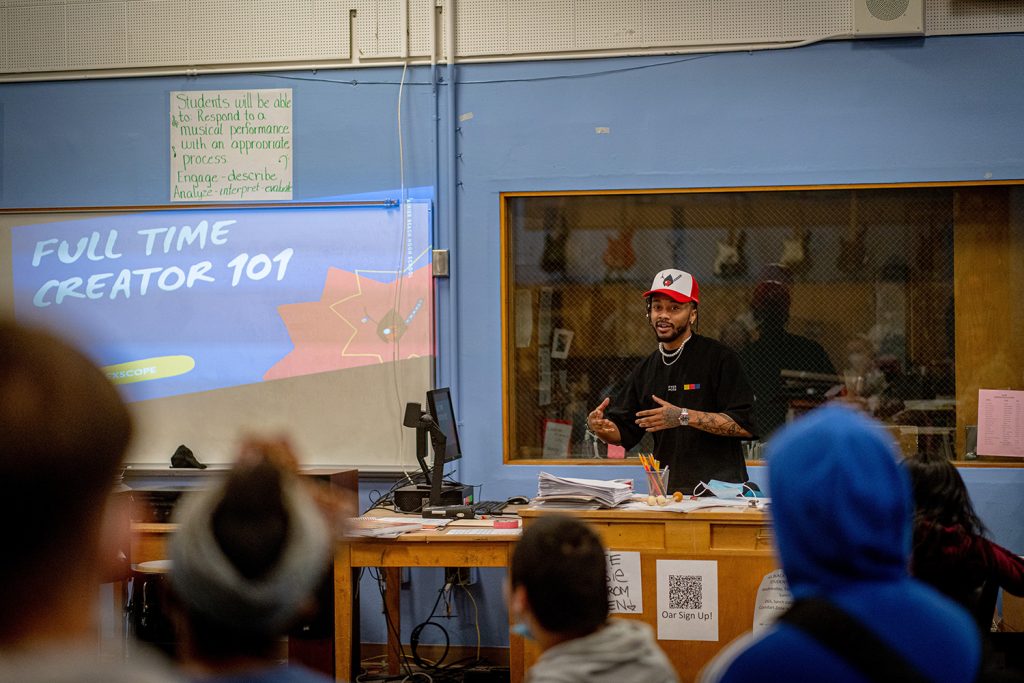WASHINGTON (December 13, 2023)— Eight percent of teachers in public schools exited the profession between the 2020-21 and 2021-22 school years a pivotal time when K-12 education was heavily impacted by the pandemic. This departure rate was unchanged from nearly a decade earlier, according to the Teacher Follow-Up Survey, a longitudinal component of the National Teacher and Principal Survey, released today by the National Center for Education Statistics (NCES), the statistical center within the U.S. Department of Education’s Institute of Education Sciences.
Overall, 84 percent of public school teachers remained at the same school during the 2020-21 and 2021–22 school years (“stayers”), 8 percent moved to a different school between the 2020-21 and 2021-22 school years (“movers”), and 8 percent left the teaching profession (“leavers”). Eighty-two percent of private school teachers remained at the same school during the 2020-21 and 2021–22 school years (“stayers”), 6 percent moved to a different school between the 2020-21 and 2021–22 school years (“movers”), and 12 percent left the teaching profession (“leavers”).
“These new data provide a snapshot of the teaching profession at a time when the U.S. education system was under incredible stress due to the COVID-19 pandemic,” said NCES Commissioner Peggy G. Carr. “And yet, these rates for teacher turnover were not statistically different from those between the 2011-12 and 2012-13 school years, the last time these data were collected.”
For those public and private school teachers who voluntarily left K-12 teaching after the 2020-21 year, a top rationale was to retire or receive retirement benefits. This was cited as the “most important reason” by 17 percent of public and 13 percent of private school teachers. Thirteen percent of public and 24 percent of private school teachers cited “other personal life reasons (e.g. health, pregnancy/childcare, caring for family),” and 14 percent of public and 10 percent of private school teachers said a desire to pursue a position other than as a K-12 teacher. Nine percent of public and 11 percent of private school teachers identified the desire for a higher salary as their chief motivation.
Public and private school teachers who left teaching after the 2020-21 year provided further insights on their new positions, such as how the work-life balance, autonomy, and prestige compared to teaching. Former teachers reported that the ability to balance personal life and work (66 percent), autonomy or control over their own work (60 percent), manageability of their workload (58 percent), and professional prestige (58 percent) were better in their new profession than in teaching.

The report released today includes selected findings from the Teacher Follow-up Survey (TFS), a longitudinal component of the National Teacher and Principal Survey (NTPS), which is a nationally representative survey of public and private K-12 schools, principals, and teachers in the 50 states and the District of Columbia. Data were collected from January 2022 through July 2022. The sample included about 8,500 public school teachers and about 1,800 private school teachers, for a total sample size of about 10,300 teachers.
The data were collected as a follow-up to the 2020-21 NTPS to provide attrition and mobility information about teachers in K-12 public and private schools. The purpose was to ascertain how many teachers from the 2020-21 school year still worked as a teachers in the same school 1 year later (“stayer”), how many had moved to become a teacher in another school (“mover”), and how many were no longer working as a principal (“leaver”).
To access the 2021-22 Teacher Follow-up Survey data and technical documentation, please visit https://nces.ed.gov/pubsearch/pubsinfo.asp?pubid=2023046.
Key Findings
Trends in Teacher Attrition by Teacher Characteristics
• Among public school teachers who were teaching during the 2020–21 school year, 84 percent remained at the same school during the 2021–22 school year (“stayers”), 8 percent moved to a different school between school years (“movers”), and 8 percent left the teaching profession (“leavers”) after the 2020–21 school year. Among private school teachers who were teaching during the 2020–21 school year, 82 percent remained at the same school during the 2021–22 school year (“stayers”), 6 percent moved to a different school (“movers”), and 12 percent left the teaching profession (“leavers”).
– These data are not statistically different from during the 2012-13 school year, when, among public school teachers who were teaching during the 2011–12 school year, 84 percent remained at the same school during the 2012-13 school year (“stayers”), 8 percent moved to a different school (“movers”), and 8 percent left the teaching profession (“leavers”).
• Among public school teachers whose total teaching experience in 2020–21 was 3 years or less, 80 percent remained at the same school during the 2021–22 school year, 13 percent moved to another school, and 7 percent left teaching.
– A higher percentage of public school teachers with 3 years or less total teaching experience in 2020-21 (13 percent) moved to a different school than did teachers with 10-14 (8 percent) or 15 or more years (6 percent) during the 2021-22 school year.
• Among public school teachers with 15 or more total years of teaching experience in 2020–21, some 86 percent remained at the same school during the 2021–22 school year, 6 percent moved to another school, and 9 percent left teaching.
Trends in Teacher Attrition by School Characteristics
• Among public school teachers who were teaching at schools where less than 35 percent of K–12 students were approved for a free or reduced-price lunch in the 2020–21 school year, 85 percent remained at the same school during the 2021–22 school year, 7 percent moved to another school, and 8 percent left teaching.
• Among public school teachers who were teaching at schools where 75 percent or more of K–12 students were approved for a free or reduced-price lunch in the 2020–21 school year, 82 percent remained at the same school during the 2021–22 school year, 9 percent moved to another school, and 9 percent left teaching.
• Among teachers in 2020–21 who were voluntarily no longer teaching in the 2021–22 school year, 16 percent indicated that their most important reason for leaving was because they decided to retire or receive retirement benefits from the previous year’s school system, 15 percent indicated that their most important reason for leaving was because of other personal life reasons (e.g. health, pregnancy/childcare, caring for family), 13 percent indicated that their most important reason was because they decided to pursue a position other than that of a K–12 teacher, and 9 percent indicated that their most important reason for leaving was because they wanted or needed a higher salary.
Former Teachers in New Jobs
• Among teachers in 2020–21 who were no longer teaching in the 2021–22 school year, 39 percent of public school teachers were working for a school or school district in a position in the field of K–12 education, but not as a regular K–12 classroom teacher. About 12 percent of public school teachers who were no longer teaching in 2021–22 were working in an occupation outside the field of education, including military service.
• Among teachers in 2020–21 who were working but no longer teaching in the 2021–22 school year,2 66 percent indicated that the ability to balance personal life and work was better in their current position than in teaching, 60 percent indicated that autonomy or control over their own work was better in their current position than in teaching, and 58 percent indicated that both manageability of their workload and professional prestige were better in their current position than in teaching.








